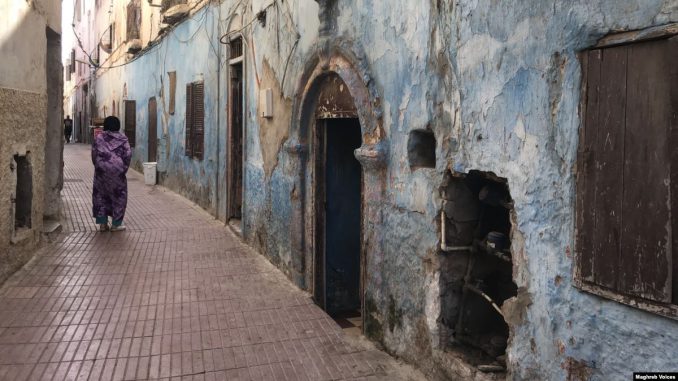
The Mellahs, Jewish neighborhoods, which were widespread in various cities in Morocco, have contributed for many years to the preservation of Jewish memory and heritage. But, abandoned by their owners from the 1950s up to now, these spaces have fallen into disrepair.
In other Arab countries, the Mellahs are called “Jewish Neighborhoods”. But what characterizes Morocco is that almost all ancient cities, such as Salé, Fez, Meknes, Marrakech, Rabat, Casablanca, Essaouira, and even Taroudant, have a Mellah.
Researchers disagree about the origin of the name “Mellah”. Some studies indicate that these were areas in which salt was stored before it was exported, while other accounts indicate that the name dates back to the 1930s under the Marinids, a period during which Moroccan Jews were responsible for salting the cut heads of the Sultan’s opponents in order to mummify them and hang them on the walls.
The first Jewish quarter, or Mellah established in Morocco, was in Fez, the former capital of Morocco, more precisely in 1438.
While some researchers who saw the Mellahs as a kind of “ghetto” for the Jewish population, others claim, on the contrary, that the real reason behind the foundation of its districts was to protect Moroccan Jews and to provide them with a space so that they could practice their rituals in complete safety.
The Moroccan writer and history professor Mohamed Kanbib, a specialist in the history of Moroccan Jews, stated in his book Muslims and Jews in Morocco… roots to the present day, that “the decision to build neighborhoods for Jews was taken by the Moroccan Sultans who wanted to protect them because they were an important financial source for the State’s treasury. Jews were called upon to remain within the walls of their neighborhoods so as not to suffer from the chaos and clashes that could take place in the cities. »
The Mellah was an important commercial center in all Moroccan cities and its heart beating. It housed many of the basic Jewish occupations such as silversmithing, sewing, carpentry and shoemaking. The Mellah was independent of the rest of the Muslim districts, both in terms of its management and the legislation in force there, which is none other than Hebrew legislation.

Be the first to comment